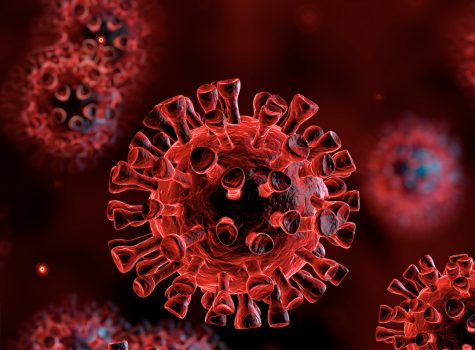FBI agent: Human trafficking can occur anywhere

This girl pictured with a barcode on her shoulder is to spread awareness for human trafficking.
“From January 1 to December 31, 2017, there were 193 identified cases of human trafficking in Illinois reported to the National Human Trafficking Hotline,” according to the 2018 Illinois Human Trafficking Report. “Of those 193 cases, there were a total of 552 trafficked persons and survivors involved.”
The definition of human trafficking is the act of recruiting, harboring, moving, or obtaining a person by force, fraud or coercion, for the purpose of involuntary servitude, debt bondage, or sexual exploitation.
The criminals who commit these acts have many similarities. They prey upon kids who lack parental supervision, have a rough home life or are easily manipulated. Traffickers will also put up a facade of a luxurious life to persuade victims into believing them.
“Predators are usually looking for children that will not be noticed when they go missing, they portray themselves as someone they are not,” said FBI agent Carrie Landau, a sex trafficking specialist based in the Midwest.
The cases themselves share many similarities, as well.
“What we find in trafficking cases is that the groups run multiple other crime organizations, such as narcotics, and use similar tactics when trafficking victims,” said Landau.
Sex trafficking is a crime that threatens the safety of every person living in America. It happens everywhere, even in Illinois.
“As of 2017, Illinois ranks 11th in the nation for number of cases of Human Trafficking,” according to the 2018 Illinois Human Trafficking Report.
Last year Peoria, which has a population of more than 110,000, saw 53 victims of human trafficking, according to a PJ Star news article. The cities of Minooka, Joliet, and Shorewood have a total population of around 180,000 people, which means something like this could happen to you or someone you love.
In recent years, the surge of technology brought many things including social media. Social media has been a contributing factor of human trafficking because of the ease at which you can communicate with strangers.
“Cases have increased due to social media because it gives predators the ability to search for more victims, as well as more children having access to the internet,” said Landau.
Recent statistics from Martin Armstrong, a data journalist, show that the number of trafficking convictions have increased from 4,166 cases in 2009 to 9,071 cases in 2016.
As statistics rise, people need to educate themselves about what to look for and realize that traffickers can be right under your nose.
Landaus said, “People need to know that this occurs everywhere, even in your neighborhood and you won’t know it.”











